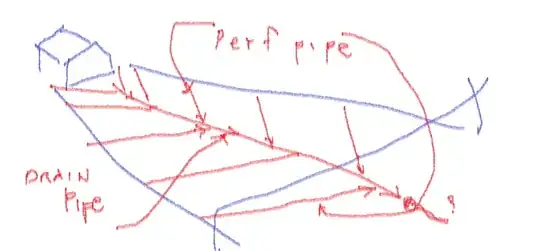Rain gardens = mosquitoes, raccoons. You need drainage. When you install your french drains do what is called a Herringbone pattern. Use perforated pipe wrapped in landscape fabric. Go diagonally across your property towards a main collector (not perf pipe).
What are the regulations for daylighting drain pipe? Install gravel below the daylighted end of the pipe to stop erosion at that point. What is the slope you are dealing with? That dictates the distance between 'parallel' perf pipes connected to a main line of drainage. Looks like a feather? Each line is taking up whatever the up slope diagonal line hasn't taken up in water.
Rain gardens = mosquitoes, raccoons. You need drainage. When you install your french drains do what is called a Herringbone pattern. Use perforated pipe wrapped in landscape fabric. Go diagonally across your property towards a main collector (not perf pipe).
I am trying to draw using a mouse, okay? This is the best I could do right now. Does it make sense? Downhill is to the right on a simple rectangular lot. I assumed your home is uphill. If it is downhill, that gets far more important and one does not ever direct water towards a home, no tying into the foundation drain that kind of thing. At least these are big no no's to try to not do?

There is also this thing I use an awful lot and that is a dry well. Instead of daylighting the pipe you would simply dig a big hole, landscape fabric, fill with drain rock and cover with landscape fabric and then soil, lawn works but not that well, rocks, cobble, gravel are great. No standing water and wet soils.
